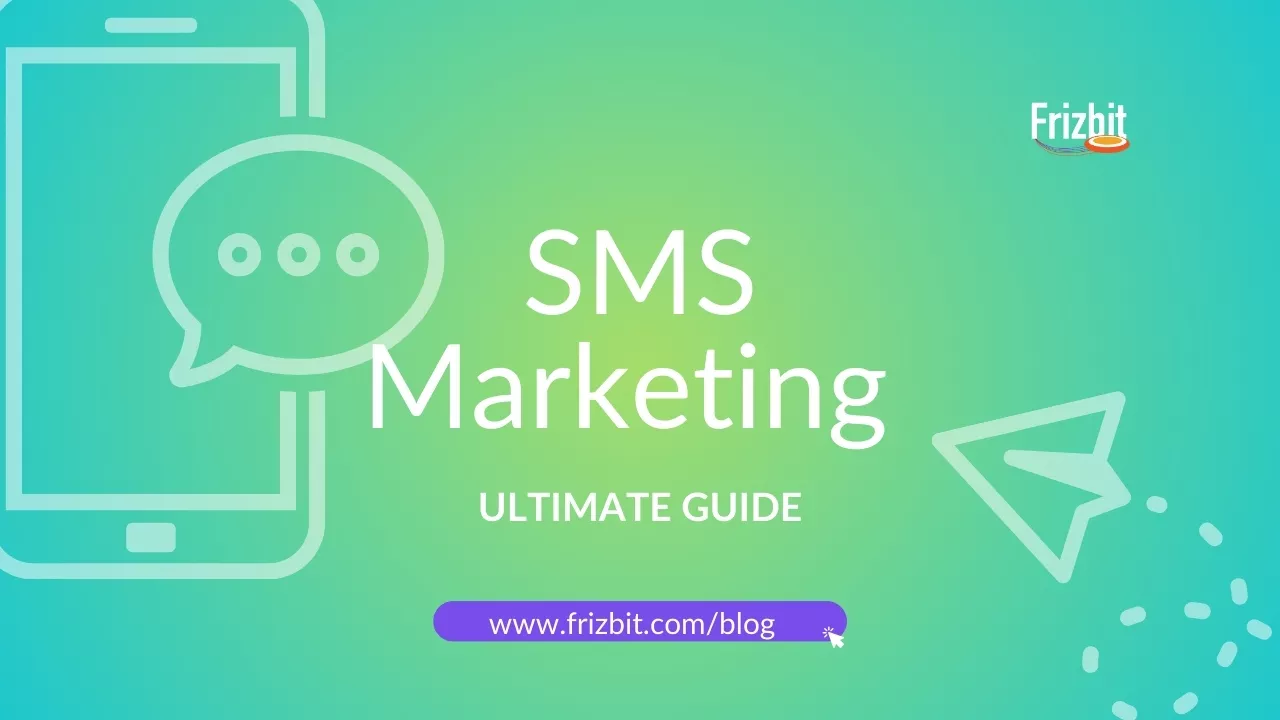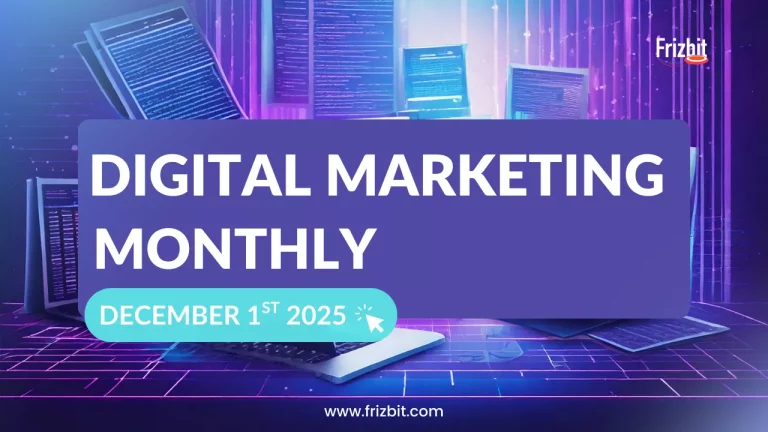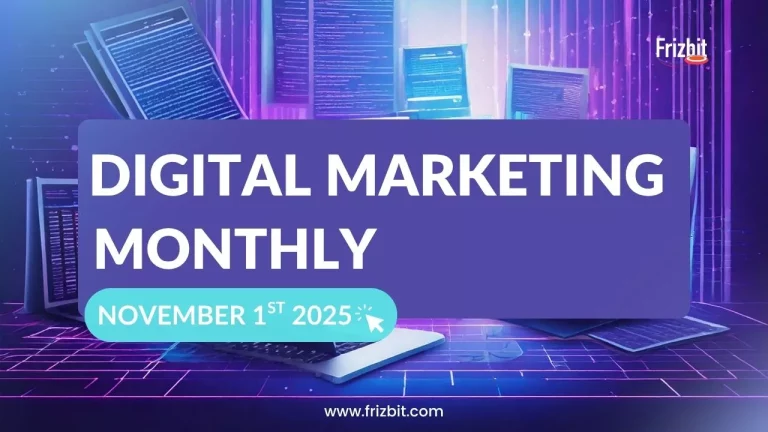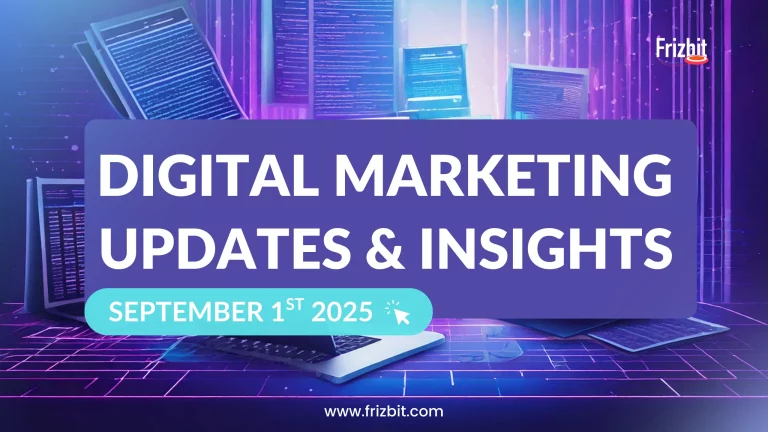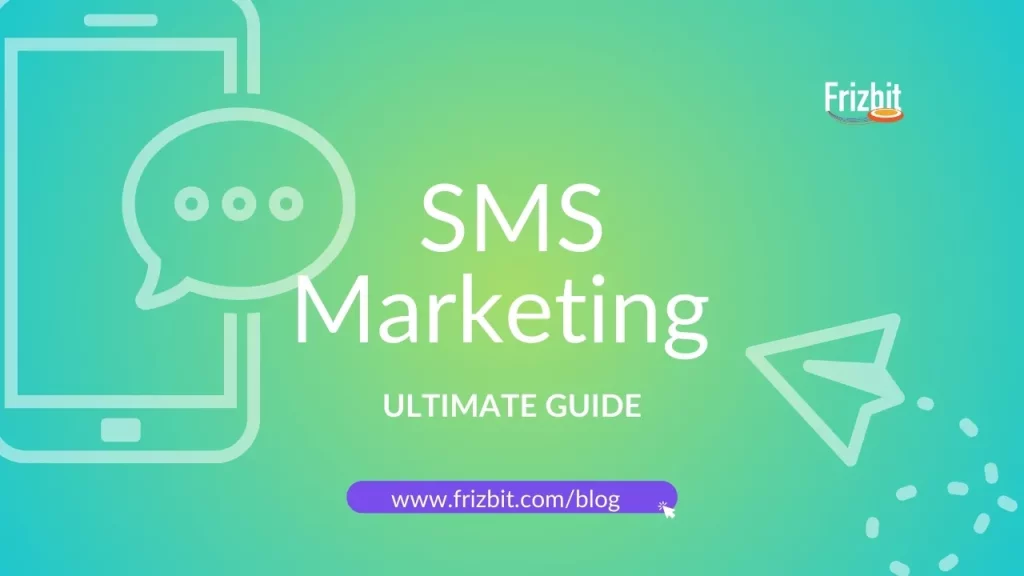
SMS marketing is an essential tool for eCommerce, offering an impressive 98% open rate, far surpassing other communication channels. With nearly immediate delivery, SMS messages ensure that your promotions, updates, and personalised communications are seen promptly by customers.
This ultimate guide will delve into what SMS marketing is, how it works, its advantages and disadvantages, various campaign types, a list of the best SMS marketing software, and practices for implementation.
By the end, you’ll have a comprehensive understanding of how to effectively leverage SMS marketing to boost engagement, drive sales, and enhance customer relationships.
What is SMS Marketing?
SMS marketing stands for “Short Message Service” and consists of sending promotional or transactional messages directly to customers’ mobile phones via text messages.
This form of marketing is direct, personal, and designed to prompt immediate action through concise and engaging content.
SMS marketing is an essential channel to implement in a marketing strategy due to its high open rates and immediate delivery. With widespread mobile phone usage, it provides businesses a direct line to their customers, making it ideal for time-sensitive promotions, transactional updates, and personalised communication that enhances customer engagement and drives conversions.
How does SMS Marketing Work?

SMS marketing works by sending text messages to customers who have opted in to receive them.
Build your list
Businesses start by building a subscriber list through various channels like website sign-ups, social media promotions, and in-store incentives. These subscribers provide their consent to receive promotional or transactional messages, ensuring compliance with legal regulations.
Craft your SMS
Once the subscriber list is established, businesses craft short, engaging messages with clear calls to action. These messages can be automated and scheduled to be sent at optimal times for higher engagement.
Segment your audience
By using segmentation, businesses can target specific groups with personalised content, increasing the relevance and effectiveness of the campaign.
Keep track of your performance
Performance metrics, such as open rates and click-through rates, are monitored to continuously optimise and improve future campaigns.
Advantages and Disadvantages of SMS Marketing
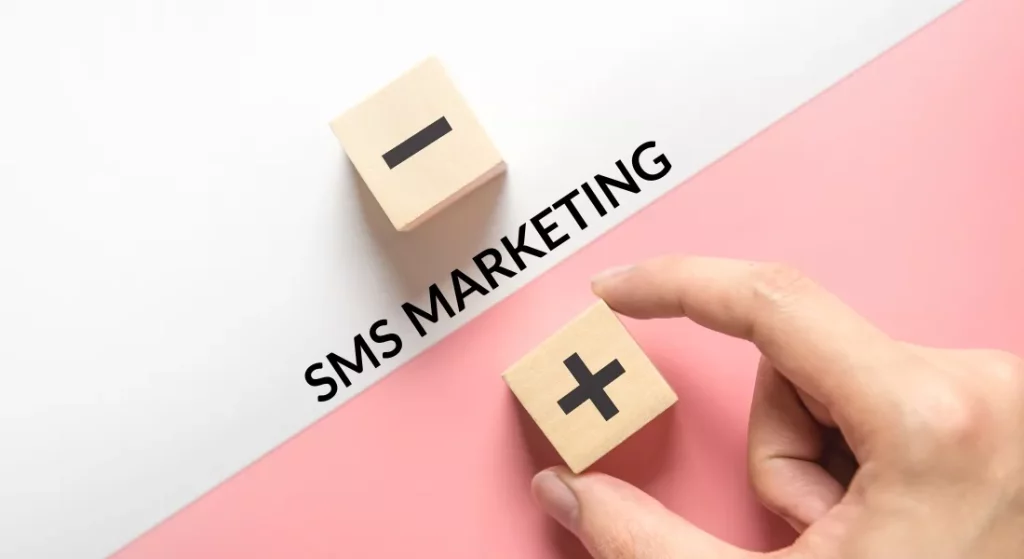
SMS marketing is a powerful tool that offers several compelling benefits, but it’s not without its challenges. Understanding both can help businesses effectively integrate SMS into their marketing strategies.
Advantages
1. High Open Rates
With an open rate of around 98%, SMS messages are almost guaranteed to be seen by recipients, making it one of the most effective communication channels.
2. Immediate Delivery
SMS messages are typically read within minutes, ensuring that your time-sensitive promotions or updates reach customers instantly.
3. Wide Reach
Nearly everyone owns a mobile phone, allowing businesses to reach a vast audience regardless of demographics.
4. Personalisation
SMS allows for highly personalised messaging. You can tailor messages based on customer data, increasing engagement and customer satisfaction.
5. Cost-Effectiveness
Compared to traditional marketing channels, SMS marketing is relatively inexpensive. It provides a high return on investment due to its direct and immediate nature.
6. High Engagement Rates
The direct and personal nature of SMS leads to higher engagement rates compared to email or social media marketing. Customers are more likely to respond to a text message.
Disadvantages
1.Message Length Limitation
With a 160-character limit, SMS messages can sometimes be too brief to convey complex information or detailed promotions, requiring marketers to be concise and creative.
2. Permission Requirements
Strict regulations require businesses to obtain explicit consent from recipients before sending SMS messages. This can be a hurdle for expanding your subscriber list but ensures a more engaged audience.
3. Risk of Being Perceived as Spam
If messages are too frequent or irrelevant, they can be perceived as spam, leading to higher opt-out rates and potentially damaging your brand reputation.
4. Limited Multimedia Capabilities
Unlike email or social media, SMS is limited in its ability to deliver rich multimedia content. While MMS can include images and videos, it’s less commonly used and can be more expensive.
Why Should We Implement SMS Marketing in eCommerce?
SMS marketing provides a direct, personal communication channel that ensures immediate delivery of messages. This is particularly beneficial for time-sensitive promotions, updates, or reminders, making it an indispensable tool for businesses looking to engage customers promptly and effectively.
Furthermore, personalised SMS messages help in nurturing customer relationships by offering tailored content and exclusive deals. This level of personalisation not only boosts customer satisfaction but also fosters loyalty, leading to higher retention rates.
Case Study MiCuento
For example, a compelling example comes from MiCuento, an e-commerce platform, which successfully integrated SMS messages into its marketing strategy with the help of Frizbit. By using automated SMS campaigns, MiCuento achieved a 7% conversion rate and an impressive ROI of 3400%.
These results underscore the power of SMS marketing in driving customer actions and generating sales.
SMS campaign types
- Promotional SMS Campaigns Promotional
SMS campaigns are designed to boost sales and engagement by offering discounts, special deals, and announcing new products or events. These messages are often time-sensitive, urging customers to act quickly.
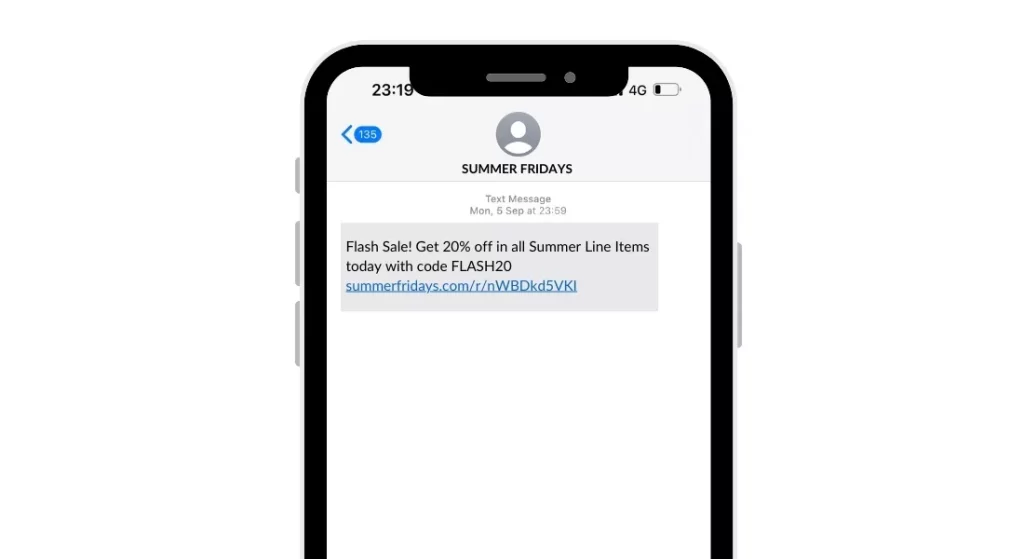
- Transactional SMS Campaigns
Transactional SMS campaigns provide customers with essential information related to their transactions, such as order confirmations, shipping updates, and appointment reminders. These messages enhance customer experience by keeping them informed.
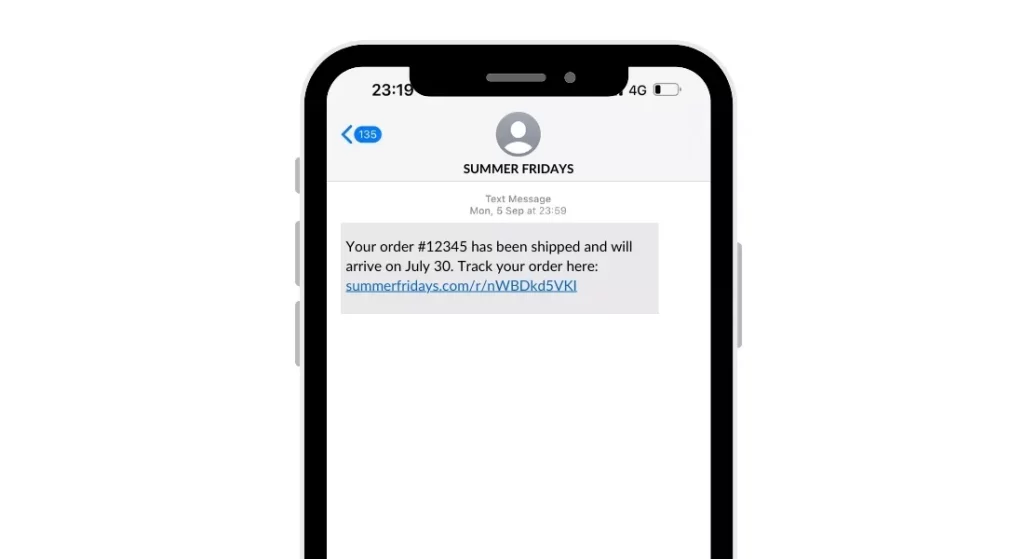
- Conversational SMS Campaigns
Conversational SMS campaigns focus on fostering two-way communication with customers, enhancing engagement and building relationships. These can include customer support interactions, personalised follow-ups, and feedback requests.
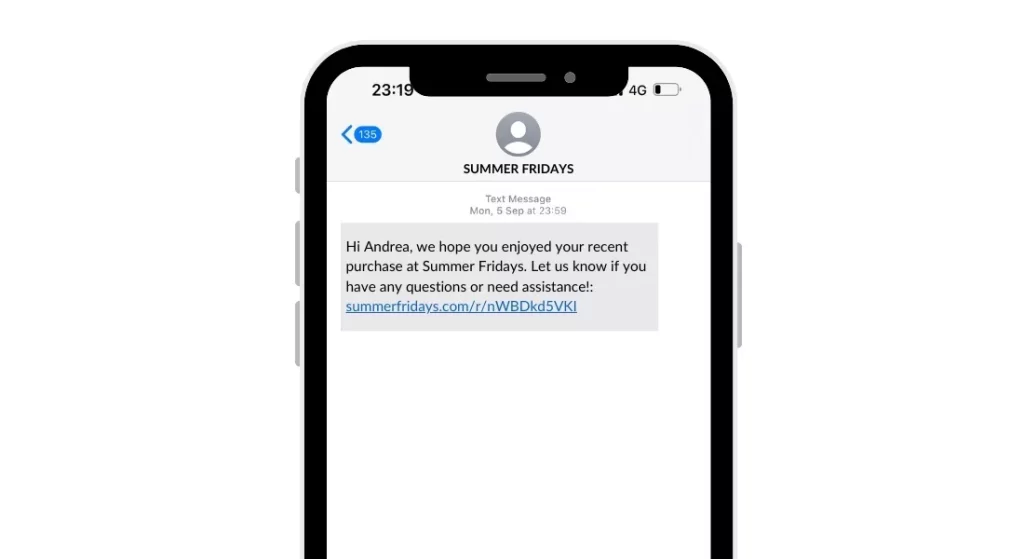
When to use promotional, transaction or conversational SMS marketing campaigns?
- Promotional SMS campaigns are ideal for driving quick sales and engagement
- Transactional messages ensure customers are kept in the loop regarding their transactions.
- Conversational SMS campaigns, on the other hand, are excellent for building a loyal customer base through personalised interactions.
Getting started with SMS Marketing in your eCommerce
1.Build Your SMS Marketing Database
Sign-Up Incentives
Offering discounts or exclusive content is a highly effective way to encourage customers to join your SMS list. For example, a 10% discount on the next purchase can be a compelling incentive.
Multiple Sign-Up Channels
Collect phone numbers through various channels such as your website, social media platforms, and in-store promotions. This multi-channel approach helps you reach a wider audience and ensures you gather more subscribers.
Opt-In and Clear Opt-Out Options
Ensure you obtain explicit consent from subscribers by using double opt-in methods. Provide easy and clear opt-out options, such as replying with “STOP” to unsubscribe, to comply with legal requirements and maintain trust.
Data Collection
Ensure data accuracy and compliance by regularly updating your database and adhering to regulations like GDPR and TCPA. Verify the authenticity of subscriber data and use secure methods to store and manage information.
2. Structure Your SMS Messages
A well-structured SMS should include a greeting, main content, and a call to action (CTA). Start with a friendly greeting to personalise the message, deliver the main content concisely, and end with a clear CTA to prompt the desired action.
Brand Identification
Ensure consistent branding in your messages. Mention your business name early in the text to avoid confusion and enhance brand recognition.
Concise and Clear Messaging
Given the 160-character limit, your messages should be concise and to the point. Clear and direct communication increases the likelihood of engagement.
Personalisation
Using customer names and preferences can significantly enhance engagement. Personalisation makes the message feel more relevant and increases the likelihood of a positive response.
Call to Action
Ensure your CTA is clear and compelling. It should instruct the recipient on what to do next, such as “Shop Now,” “Claim Your Discount,” or “Learn More.”
Compliance with Regulations
Adhere to regulations such as GDPR, TCPA, and other relevant laws to avoid legal issues and protect customer privacy.
3. Plan the best time to Send SMS Marketing Campaigns
To maximise engagement, send SMS messages during peak times when recipients are most likely to read them. Typically, mid-morning (10-11 AM) and early evening (4-6 PM) are effective times. Additionally, consider the day of the week; mid-week days like Tuesday, Wednesday, and Thursday often yield better results.
4.Use automation SMS Marketing Campaigns
Automation ensures consistency, efficiency, and personalisation in your SMS marketing campaigns. By automating your messages, you maintain regular touchpoints with your audience, saving time and allowing for strategic planning.
Automated messages are always relevant and timely, enhancing overall engagement.
Best SMS Marketing Software
- Frizbit
Frizbit is a cross-channel marketing automation platform designed for eCommerce businesses. It helps recover abandoned carts and drive customer engagement through hyper-personalised messages across SMS, email, and web push notifications.
- Omnisend
Omnisend is an eCommerce-focused email and SMS marketing solution that integrates multiple communication channels, including push notifications, to streamline marketing efforts.
- Klaviyo
Klaviyo provides marketing automation for email and SMS, offering robust segmentation and analytics tools to create targeted, data-driven campaigns.
- Twilio
Twilio is a cloud communication platform that allows businesses to integrate SMS, voice, video, and other communication methods through APIs, supporting scalable and customised communication solutions.
- Campaigner
Campaigner is an email and SMS marketing automation platform that offers dynamic segmentation, A/B testing, and integration with eCommerce platforms like Shopify and Magento.
Below is a table highlighting the pros and cons of each SMS marketing software and what sets them apart from the competition:
| SMS Marketing Software | Pros | Cons |
|---|---|---|
| Frizbit | Hyper-Personalisation, Unlimited Automation, Audience Segmentation, Full-Funnel Campaign Journeys, High ROI (up to 20x) | Collaborative Onboarding Process |
| Omnisend | Multi-Channel Messaging, Segmentation, Free Plan | Email Deliverability Issues, Delayed Advanced Reports |
| Klaviyo | Segmentation, Real-Time Analytics, Integrates with eCommerce Platforms | Price Increases with List Size, Some Advanced Features Require Development Knowledge |
| Twilio | API Integration, Supports Multiple different Channels | Developer-Focused, Requires Technical Knowledge |
| Campaigner | Automation Workflows, eCommerce Integration, 24/7 Customer Support | No Free Plan, Less Intuitive Interface |
SMS Marketing Examples
1. Welcome Messages
Welcome messages greet new subscribers and set the tone for future interactions. They immediately engage and introduce your brand, often offering a discount code to encourage first-time purchases. However, overwhelming new subscribers with too much information at once can deter them.
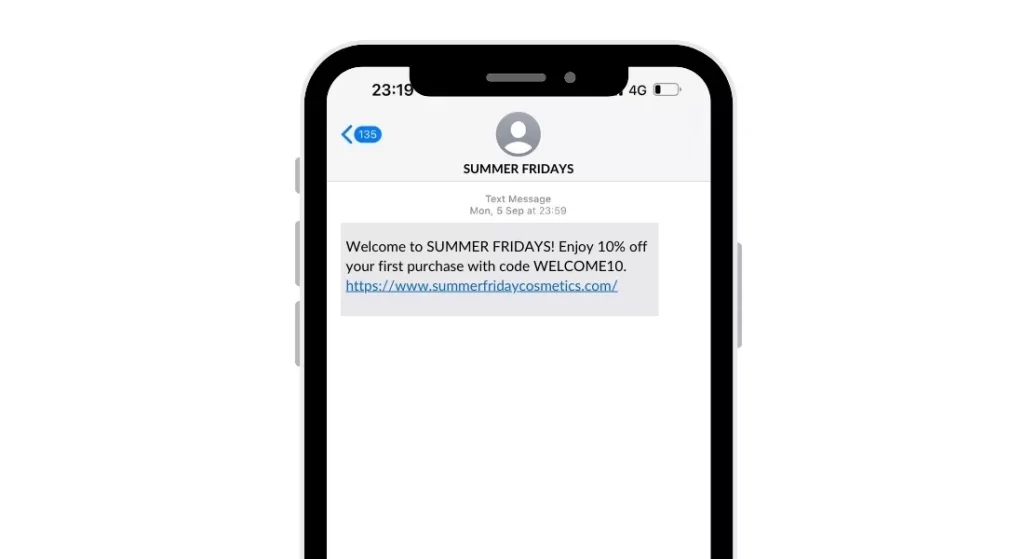
2. New Product Releases
Announcing new products via SMS keeps your audience informed and excited. This approach creates buzz and directs traffic to your website quickly. However, frequent product updates can annoy subscribers if not managed properly.
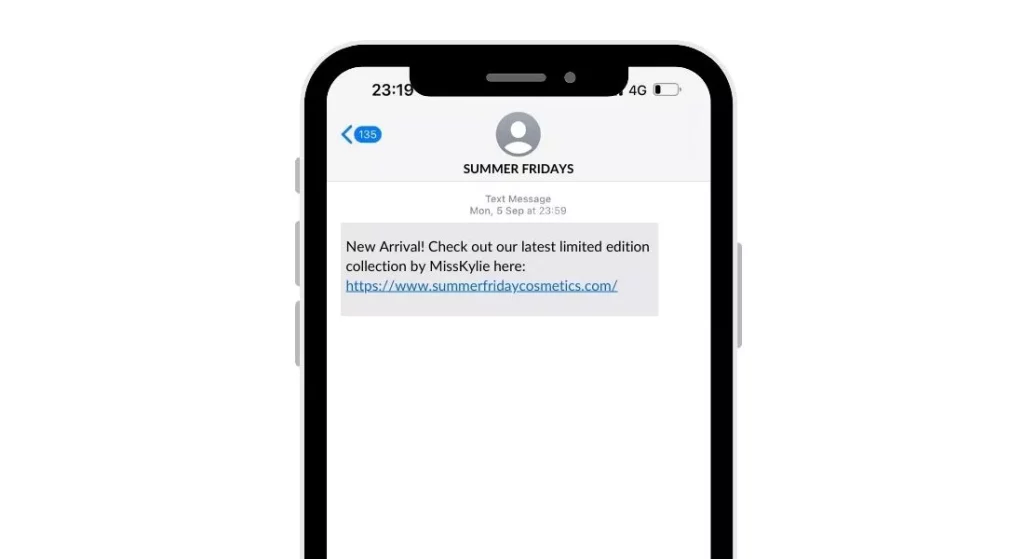
3. Abandoned Cart Reminders
Remind customers about items left in their shopping cart to encourage purchases. This tactic has high conversion rates and boosts engagement with personalised reminders. However, it can be seen as intrusive if reminders are too frequent.
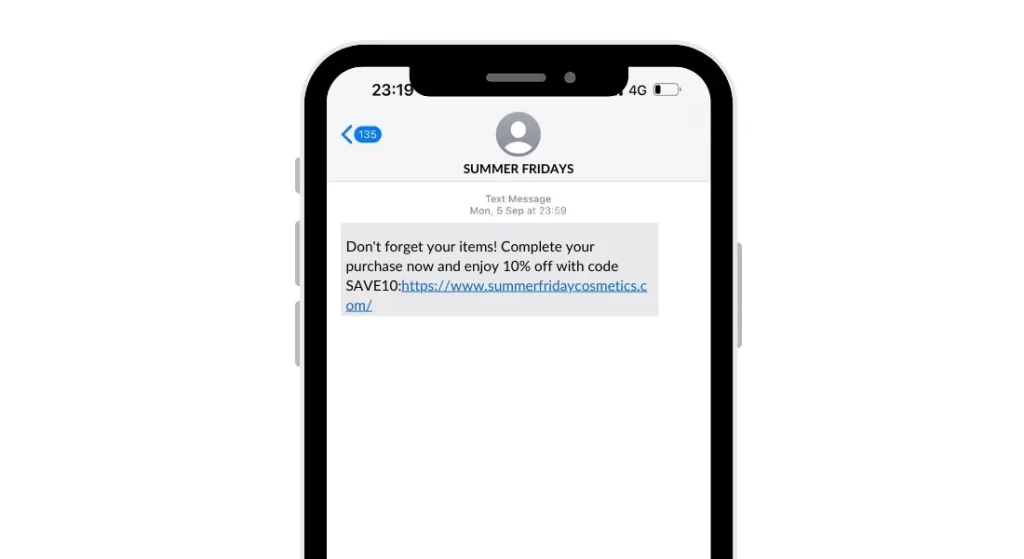
4. Restock Notifications
Inform customers when popular items are back in stock, driving sales from high-demand products and creating urgency. However, this strategy is limited to products that frequently sell out, which may not apply to all businesses.
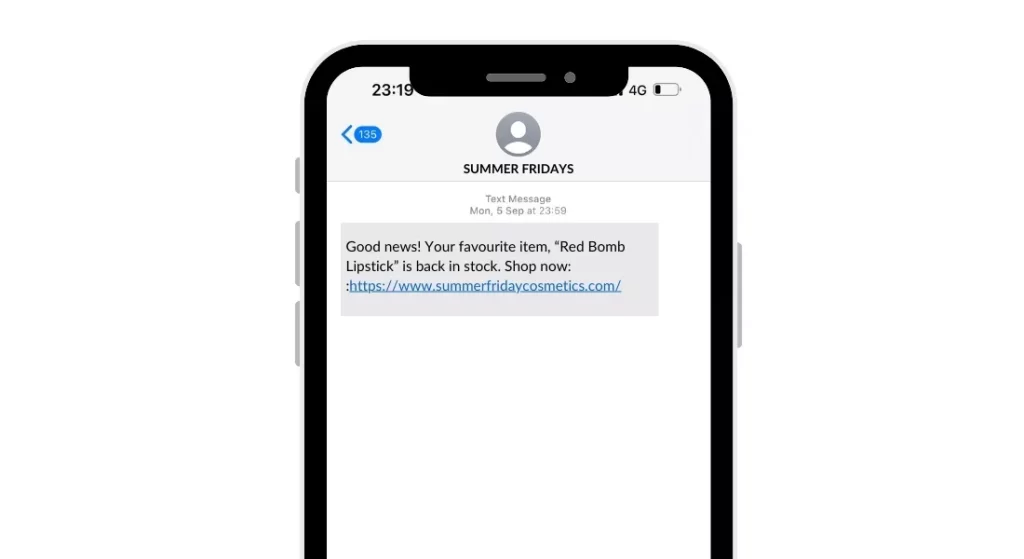
5. Customer Feedback Requests
Gather valuable customer feedback to improve products and services, engaging customers by valuing their opinions and providing business insights. However, response rates can be low if not incentivised.
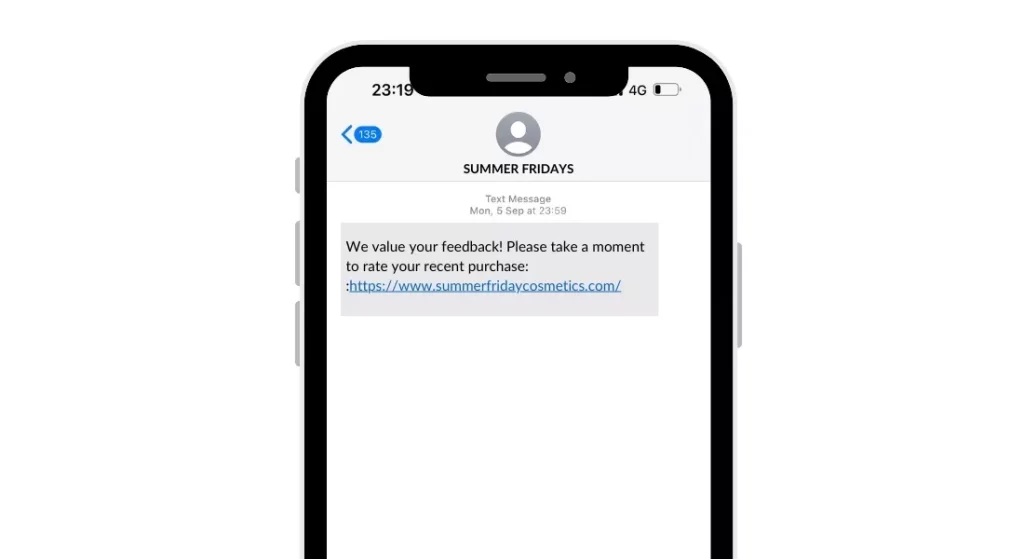
Advanced SMS Marketing Techniques
As your SMS marketing strategy matures, incorporating advanced techniques can significantly enhance your campaigns’ effectiveness.
Automation and Drip Campaigns
Use automation to send timely and relevant messages. Furthermore, use Drip campaigns to nurture leads and guide customers through the sales funnel with a series of scheduled messages.
Integrating SMS with Other Marketing Channels
Combine SMS with email, social media, and other channels for a cohesive marketing strategy. This multi-channel approach enhances customer experience and ensures consistent messaging.
Use hyper-personalisation
Send targeted messages to re-engage inactive customers or retarget those who abandoned carts. Hyper-personalised reminders and offers with Frizbit to drive conversions and renew interest.
Leveraging Multimedia Messaging Service (MMS)
Enhance your messages with images, videos, and other multimedia content using MMS. This can make your messages more engaging and visually appealing, leading to higher engagement rates.
SMS Campaign Success Metrics
Open Rates
Open rates measure the percentage of recipients who open your SMS messages. High open rates indicate effective subject lines and relevant content. Benchmarks vary by industry, but a good open rate for SMS is around 98%.
CTR measures the percentage of recipients who click on a link within your SMS. To improve CTR, ensure your message is compelling and your call to action is clear. Tracking CTR helps gauge the effectiveness of your content and link placements.
Conversion Rates
Conversion rates track the percentage of recipients who take a desired action, such as making a purchase. This metric is crucial for understanding the direct impact of your SMS campaigns on sales and engagement.
Churn Rates
Monitoring unsubscribe rates helps identify if your messages are too frequent or irrelevant. High unsubscribe rates indicate a need to refine your content strategy and ensure you’re providing value to your recipients.
Customer Engagement
Customer engagement measures overall interaction with your SMS campaigns, including responses and follow-up actions. Enhancing engagement involves personalising messages, providing valuable content, and maintaining a respectful communication frequency.
Future Trends in SMS Marketing
The SMS marketing landscape is set to evolve with emerging technologies like rich communication services (RCS) that offer high-resolution images, videos, and interactive elements.
AI and chatbots are becoming essential for providing automated, personalised interactions, enhancing customer engagement, and streamlining support. As mobile usage continues to rise, SMS marketing is expected to integrate more seamlessly with other digital channels.
Conclusion
SMS marketing is a potent strategy for engaging customers, driving sales, and enhancing communication. By understanding its benefits and challenges, structuring effective messages, and using automation, businesses can maximise the impact of their SMS campaigns.
Key metrics such as open rates, click-through rates, and conversion rates should be monitored to continuously optimise performance. With the right approach, SMS marketing can significantly boost your eCommerce efforts, providing a direct and personal connection to your audience that drives meaningful interactions and results.
SMS Marketing FAQ
Is SMS marketing illegal?
Text message marketing is legal, provided you adhere to the relevant regulations. In the U.S., there are specific laws that govern marketing communications with consumers. Violating these laws can result in fines or lawsuits, potentially damaging your brand’s reputation.
Is SMS marketing still effective?
SMS marketing boasts a high conversion rate. Mobile users are more responsive to text message calls to action compared to other marketing channels. Research indicates that SMS messages have an average response rate of 45 percent, significantly higher than the average email response rate of 6 percent.
How big is SMS marketing?
The SMS marketing industry is projected to be valued at $12.6 billion by 2025, with an annual growth rate of 20.3%. This growth is driven by the introduction of new AI tools that enhance SMS marketing effectiveness and its expansion into new sectors.
Is SMS marketing spam?
SMS marketing shares similarities with email marketing. If your initial messages are overly aggressive with heavy sales language and links, mobile carriers may flag your communication. Such tactics can lead to recipients marking your messages as spam and opting out.
Does anyone still use SMS?
A recent study revealed that one-third of people still send at least one SMS daily, and 54% use SMS to contact those who are not on other messaging platforms like Signal or WhatsApp.
